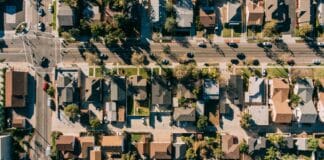The Federal Reserve raised interest rates by 75 basis points during its September Federal Open Market Committee (FOMC) policy meeting. After four previous increases, the benchmark fed funds rate now stands in the 3.00 percent to 3.25 target range. Economists are anticipating two more rate hikes to finish 2022, but the size might depend on upcoming economic data, including inflation and jobs.
While the Fed’s decisions have consequences for the broader financial markets, they might also have vast implications for household budgets across the country, be it credit cards or savings accounts.
The Fed directly influences the prime rate, which is the base rate of how other interest rates are created, whether it is a personal loan or a car loan.
Credit card businesses will charge cardholders a variable interest rate that is based on the prime rate. Because the U.S. central bank’s decisions affect short-term rates, this can significantly impact what Americans pay on their credit cards. Today, the average credit card APR is 18.10 percent, up from 17.13 percent in the middle of July, according to Bankrate.
A recent analysis from personal finance website WalletHub estimated that the rate hike would cost consumers an extra $5.3 billion in credit card debt over the next 12 months. This is in addition to the $15.3 billion increase Americans have already incurred this year by the Fed’s previous rate hikes.
“Credit card debt is easy to get into and hard to get out of,” said Ted Rossman, a senior industry analyst for CreditCards.com, in a report. “High inflation and rising interest rates are making it even harder to break free.”
Home equity lines of credit (HELOCs) are also greatly influenced by the Federal Reserve. These credit products are generally tied to the prime rate. The interest rate attached to auto loans is also typically connected to the prime rate.
Mortgage rates are structured a bit differently. For the most part, they are connected to the 10-year Treasury yield. However, the Fed’s decision has an indirect effect on mortgage rates. The mortgage market may have already factored in the anticipated increase in interest rates. Since the beginning of the year, mortgage rates have more than doubled, topping 6 percent. This is the highest level since the 2008 housing crash.
If the Fed indicates more rate hikes, mortgage rates could rise further.
Despite investors betting that the Fed will start cutting interest rates early next year to spur economic growth, public policymakers insist that rates will remain high for at least the next 15 months. This means that it will become more expensive to access credit or cost more to service current debt levels.
In addition, according to the Federal Reserve Bank of New York’s (FRBNY) recent Survey of Consumer Expectations (SCE) report, 58 percent believe it will be harder to obtain credit one year from now.
Financial experts purport that it is crucial to modify your household finances before rates become too high for the typical indebted consumer. This consists of creating a budget, spending within your means, paying off debt, putting together an emergency fund, and continuing to save.
“It’s important to carefully evaluate reoccurring expenses and cut back on the ‘auto charges’ that could be done without,” Shmuel Shayowitz, the president and chief lending officer at Approved Funding, told The Epoch Times. “Get out of the habit of living off credit cards and borrowed funds and defer purchases whenever possible.”
When central banks slash interest rates, consumers usually transition away from saving and shift toward the equities market to shield their money from inflation. However, now that the nation is entrenched in the middle of a tightening cycle, depositors will receive better interest-bearing payments on their savings.
Unfortunately, the problem is that the real interest rate (inflation-adjusted) is still in subzero territory, meaning that savers continue to endure negative returns on their deposits.
This can be mitigated by seeking out high-interest savings accounts, utilizing online financial institutions, investing in money market funds (mutual funds that park your money in U.S. T-bills and commercial paper), or inquiring about certificates of deposit (CDs) at your neighborhood bank.
But Fed officials have insisted that they will not stop raising rates until they have successfully reined in 40-year high price inflation. In addition, many rate-setting Committee members have noted that everyone needs to become accustomed to higher-for-longer interest rates, which would be positive news for habitual savers.
The personal savings rate has been on a downward spiral since peaking at nearly 35 percent, cratering to 5 percent in July.
At the same time, investment portfolios have taken a hit under today’s rising-rate economic climate. Typically, the U.S. central bank raising rates can have a domino effect. Consumer demand wanes, slowing down business activity. Next, investors start seeing signs of a declining economy, prompting them to begin easing their investments or even trimming their holdings. This triggers a selloff, traders panic, and the equities arena is now stuck in a bear market.
This has been evident in 2022 as the leading benchmark indexes have crashed throughout the Fed’s tightening efforts. The Dow Jones Industrial Average has dropped more than 15 percent, the Nasdaq Composite Index has plunged about 27 percent, and the S&P 500 has declined close to 20 percent.
“The silver lining of a hawkish Fed and an ongoing global growth slowdown is that inflation expectations continue to decline. As previously commented, I think the market is more concerned with inflation than growth,” said Nicke Reece, a portfolio manager at Merk Investments, in a note to clients. “As always, the outlook remains data dependent and everyone needs to put probability and reward-to-risk assessments in the context of their strategy, process, and time horizon.”
Reporting from The Epoch Times.






